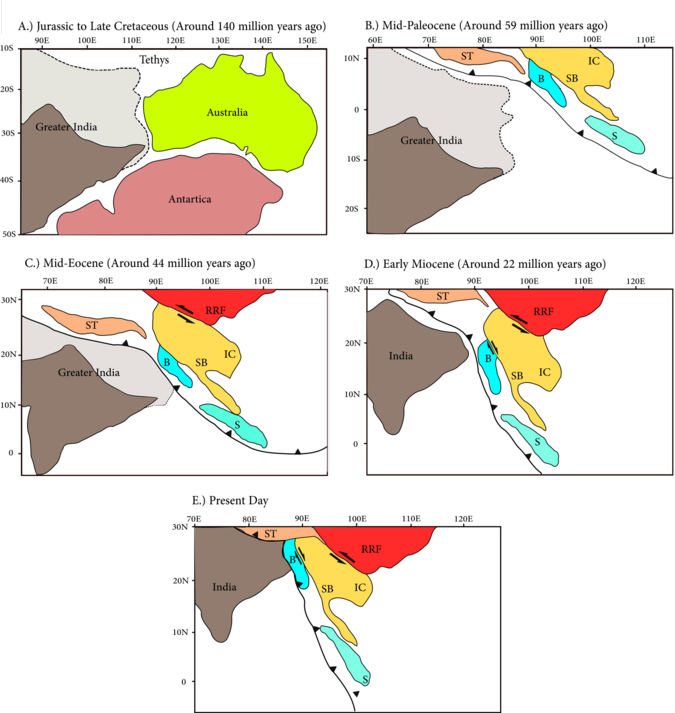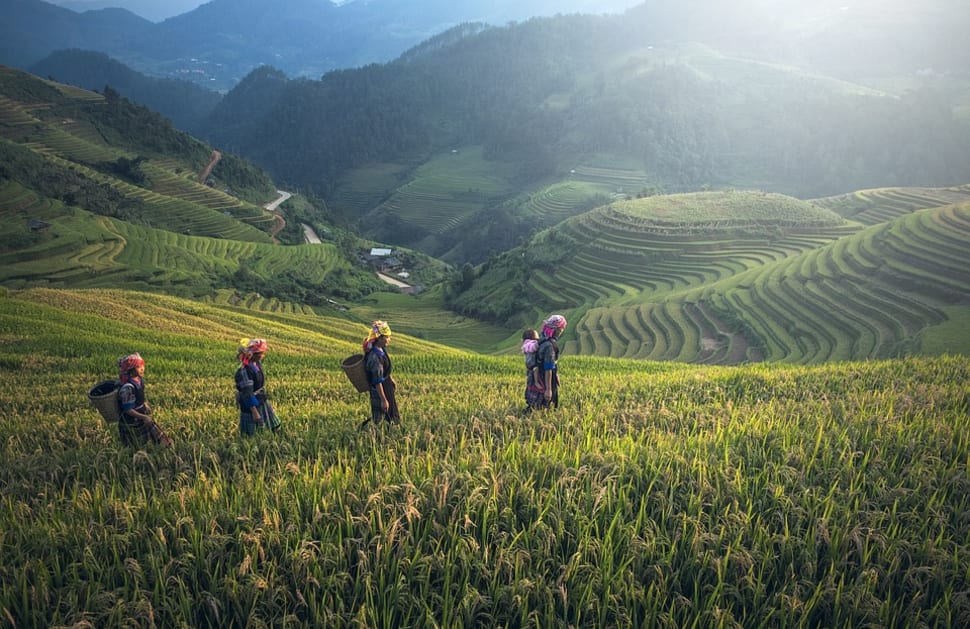In the Cenozoic Era, roughly 55 to 10 million years ago, a continent-to-continent collision took place between the India and Eurasia Plate. This lead to the Himalayan Orogeny - an ongoing event that continues to this day changing the landscape in Southeast Asia. During this time frame the Burma Plate rotated clockwise to accommodate the major collision that was taking place. See Images B, C, and D below to see what this would have looked like.
Image Source: https://upload.wikimedia.org/wikipedia/commons/thumb/d/dc/The_Geological_Evolution_of_Myanmar.png/675px-The_Geological_Evolution_of_Myanmar.png
Sources:
https://en.wikipedia.org/wiki/Geology_of_Myanmar
http://www.gsm.org.my/products/702001-101352-PDF.pdf
http://myanmar-preview.iwmi.org/sites/default/files/Documents/regional_geology_of_myanmar.pdf


-with-roads-railroads-and-major-cities-1991.jpg)